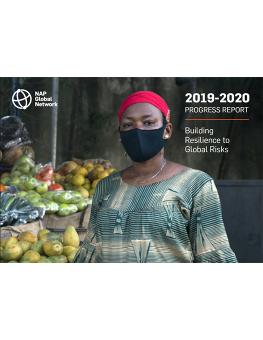
Building Resilience to Global Risks: NAP Global Network Progress Report 2019-2020
This progress report on the NAP Global Network’s activities from December 2019 to November 2020 highlights our work to support developing countries in accelerating adaptation planning and action.
Risk and resilience were dominant themes in 2020. While the COVID-19 pandemic demonstrated the speed and severity of some of the emerging risks we face, the unrelenting impacts of climate change served as a reminder of the ongoing (and growing) risks we still struggle to manage. In many cases, we saw the pandemic and climate crises converge, whether through amplified impacts or win–win recovery solutions. Either way, the case for building resilience to a range of different but oftentimes mutually reinforcing risks was clear.
You might also be interested in
Toolkit for Monitoring, Evaluation, and Learning for National Adaptation Plan Processes
This toolkit provides practical guidance for the development and continuous improvement of MEL systems for national adaptation plan processes to government teams and practitioners working on adaptation.
Progress on Vertical Integration in National Adaptation Plan Processes
This synthesis report presents an analysis of how countries are advancing vertical integration in national adaptation plan processes.
Four Key Elements to Ensure a Successful Global Goal on Adaptation
As the final rounds of negotiations on the GGA kick off at COP 28, a looming question remains: Will it be comprehensive enough for countries to implement in the years ahead?
Public Engagement on Climate Change Adaptation
This report provides an introduction to public engagement on climate change adaptation for decision-makers involved in leading national adaptation plan (NAP) processes.